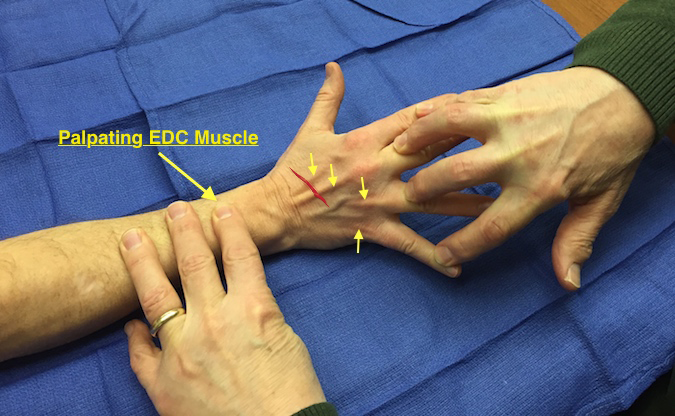Extensor Digitorum Communis (EDC) Exam
Start by asking the patient to actively and gently extend the injured finger(s). If a more detailed exam is possible and needed, then position patient’s hand and upper extremity in pronation, wrist in neutral, and metacarpophalangeal (MP) and interphalangeal (IP) joints in a relaxed, slightly flexed posture.
Next, stabilize the wrist in neutral position. Place the examiner’s index finger across the dorsum of all the patient’s proximal phalanges just distal to the MP joints. The examiner exerts resistance in the direction of the flexion while instructing the patient to “bend your knuckles back,” i.e. straighten or extend your fingers. If the EDC tendon for any given finger is lacerated completely, then the patient will be unable to extend the MP joint of the injured finger, even if the resistance the examiner is applying is zero. If the laceration is only over one EDC tendon, then examine it separately and compare the exam to the adjacent uninjured fingers.
- MP extension of the fingers is not a strong motion and only slight resistance is required to “break” the end position.
- It is usual for the active range of motion to be considerably less than the available passive range of motion. In this test, therefore, the “full available range” is not used and the active range is accepted.
- Be aware that the juncturae tendinum can sometimes extend a finger at the MP joint even if the EDC is lacerated completely.
